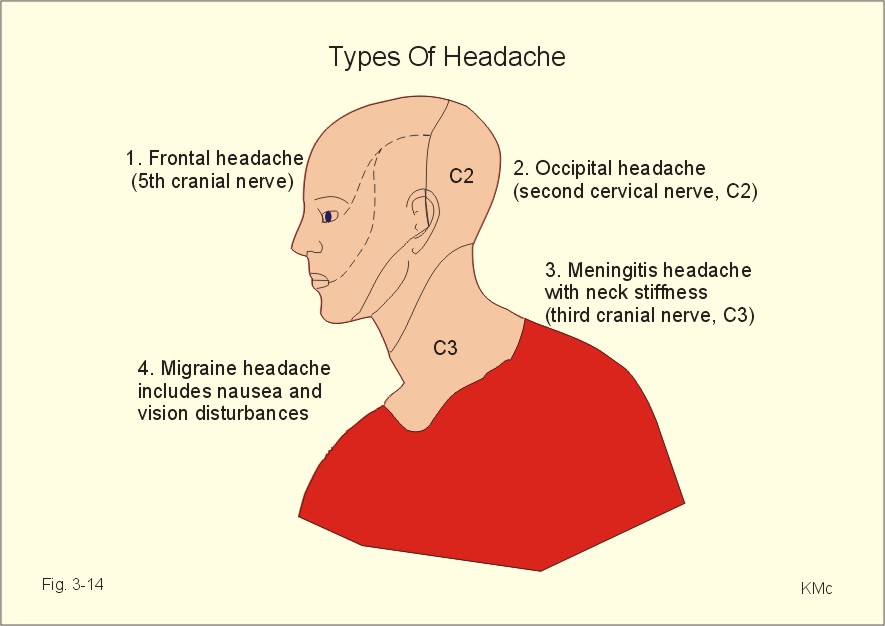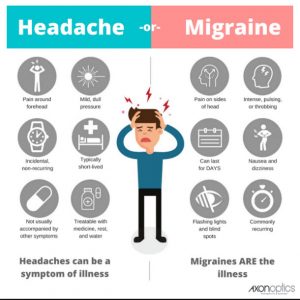The Anatomy and Physiology of Headaches
Headaches are one of the most common ailments that plagues people of all ages. Researchers estimate that 9 out of 10 Americans experience headaches at some point. Furthermore, in the last 12 months 95% of women and 90% of men have had at least one headache. For about 45 million of us Americans, those headaches are considered chronic.
How one experiences the frequency, severity, and duration of headache symptoms can vary greatly from person to person. They range from being intermittent or occasional to near constant and from dull and mild to throbbing and sharp. Some even get so severe they cause nausea and become truly debilitating, preventing the sufferer from working and even enjoying simple day-to-day activities many of us take for granted.
Headaches can occur for different reasons. They are divided into two different categories, depending on their cause. Primary headaches (the most common) are headaches that arise on their own and not caused by some external factor or condition. Secondary headaches occur as a result of some other health condition. As chiropractors, we most commonly deal with three different types of headaches in our patients:
- Tension headaches are primary headaches that are triggered by muscles pulling in the head, neck and shoulder and/or a misalignment of one of the bones in the neck. They are often triggered by stress. Misaligned bones in the neck in conjunction with muscular contractions can themselves become the source of tension and stress throughout the body that eventually causes a headache. In today’s society, many people engage in more sedentary lifestyles than they used to, and more and more hours are spent in one fixed position or posture (sound familiar?). This can increase joint irritation and muscle tension in the neck, upper back and scalp, ultimately causing your head to ache.
- Migraine headaches are also in the primary headache category. They are often referred to as vascular headaches, due to the fact they occur when blood vessels in the head suddenly dilate or expand. Research into the cause of migraines is ongoing, but we know that the nervous system and genetic factors are also leading contributors. People who experience migraines report wide array of triggers and associated symptoms.
- Cervicogenic headaches are in the secondary headache category, because they are produced when pain begins in the neck or back of the head and is referred to the forehead or the area behind, in and around the eyes. Some common triggers of secondary headache are trauma, chronic tension and disease. Trigger points in the neck, shoulder blade and spine are also sources of cervicogenic headaches, though they can be more difficult to identify.
Over the years, many over the counter and prescription medications have been developed to relieve the symptoms of headaches and migraines. However, they typically do very little to address the underlying cause of the problem. Furthermore, many of these medications have unwanted side effects, especially is they’re used often and/or over a prolonged period of time or in combination with other medications. Because of this, many people are beginning to seek out “alternative” approaches to managing headaches, rather than reaching for that bottle of pills in the medicine cabinet.
Chiropractic has been shown to be effective in preventing or reducing the frequency and severity of both primary and secondary headaches in a large and growing body of medical research. One study performed by the New Zealand government showed that the majority of people suffering from recurring headaches from spinal misalignment found that their headaches were relieved by chiropractic adjustments, and many were found to still be without pain in the two-year follow up. Another study published in the Journal of Manipulative and Physiological Therapeutics found that spinal adjustments are more effective and longer-lasting for treating tension headaches than the use of commonly prescribed pain meds.
At Hurley Chiropractic, our doctors perform a thorough examination to identify the cause of your headache pain. Depending on your health history and specific circumstances, we may recommend chiropractic adjustments to improve function in the spine, relieve muscle tension, reduce nerve irritation and improve vascular flow. We may also recommend other therapies, like massage or therapeutic stretches and exercises, as a part of our treatment plan to give you the best results in reducing symptoms and achieving your goals. Other recommendations we make might include lifestyle advice on posture, diet, exercise, sleep and stress management techniques (see our last blog post!).
If you or someone you care about suffers from recurring migraines or headaches, we encourage you to make an appointment with us ASAP so we can start getting to the root of the problem and help you live headache free!











